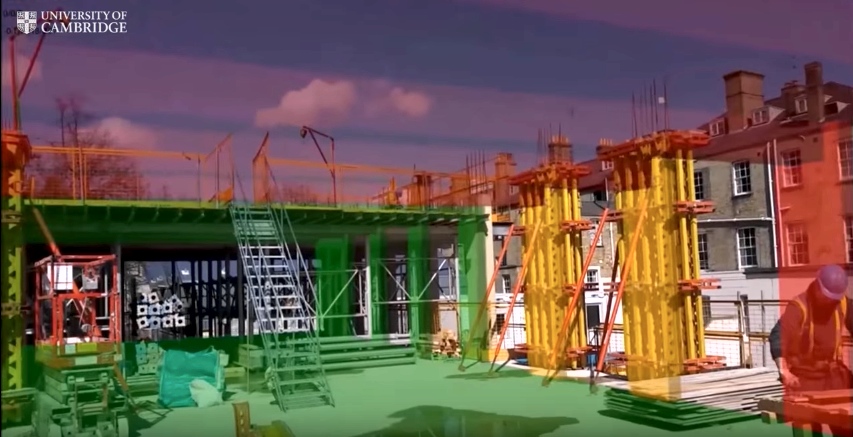Trimble has been busy with mixed reality. Over the past year or so, the company has been developing specialized apps for a number of industries, and their SketchUp Viewer, which allows for easy publishing of design models to HoloLens, was released in November. It’s already “the first broadly available” commercial HoloLens application.
Now, in cooperation with Microsoft and the Construction Information Technology Lab at the University of Cambridge to develop two new HoloLens applications for construction. The first is an automated progress monitoring app, and the second is an automated bridge damage detection app.
Automated Progress Monitoring
Microsoft says this app is “a way to address one of the most laborious, time-consuming, and error-prone procedures in the industry: the demand to regularly, and manually, inspect remote structures.”
It may sound like there are some advanced analytics under the hood (they do call it “automated” progress monitoring) but there’s no machine learning here. The app simply brings together visual information, forms, reports, drawings, and databases for easy referencing. Simply by putting all this information into the HoloLens interface and allowing users to view it at whatever scale they want, Microsoft says, it has enabled inspectors to work faster, and more efficiently.
Automated Bridge Damage Detection
Again, this app is more person-powered than analytics-powered. Using the app, inspection engineers can lay high-resolution images on top of the 3D model of the bridge. With all this information in one place, structural engineers can make recommendations for repairs without leaving the office. It enables them to work faster and spend less money in the process.
The Value of Low-Hanging Fruit
If you’ve been following news about uses for HoloLens in the construction space, these apps won’t feel very disruptive (or even very flashy). They are, however, important work, because they’re the low-hanging fruit that prove out the value of the technology. Bringing information together to make it easier for a user to cross-reference is a low-complexity but high value use of this new technology.
In other words, for apps that are relatively simple, they will likely accomplish quite a lot. Whether they’ll justify the costs of a HoloLens in these industries I can’t say, but they’re certainly a good start.






